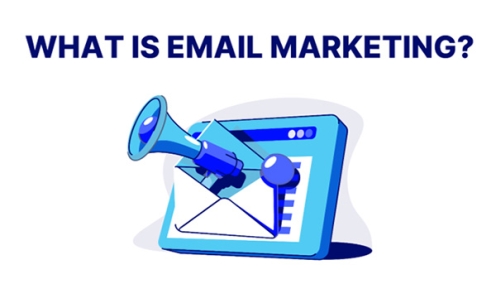Email Marketing remains a steadfast foundation in the always-changing digital marketing realm, where trends come and go. This guide will thoroughly examine email marketing, including its various advantages, potential drawbacks, and how you can utilise it effectively to achieve significant success in your business.
What is Email Marketing?
Email marketing is much more than simply sending messages to your clients or customers. Beyond simple communication, it’s about cultivating connections and fostering relationships.
It requires creating engaging stories that deeply connect with your audience, ultimately motivating them to take specific actions, such as purchasing a product, subscribing to a service, or participating in a campaign. This involves customised content and data-driven analysis to connect with specific demographics strongly.
An Overview of Email Marketing Strategy
Email is a digital platform that allows businesses to communicate various messages online. It is a conduit between brands and consumers, cultivating a direct and intimate relationship between them.
The adaptability of email is unmatched, as it can be used for instructive newsletters as well as appealing email advertising offers. However, effectively utilising this medium requires a profound comprehension of user behaviour, tastes, and the always-changing dynamics of the digital environment.
A well-organised email grabs the reader’s attention and smoothly directs them through the information. Every piece, from the subject line to the call to action, has a crucial significance. A successful email marketing strategy has several crucial components, from captivating subject lines that stand out from the competition to aesthetically pleasing designs that are optimised across different devices.
An effective email marketing plan demands a skilful combination of imaginative thinking and data analysis. You will need to understand your target audience as well as the technical complexities of the email platform.
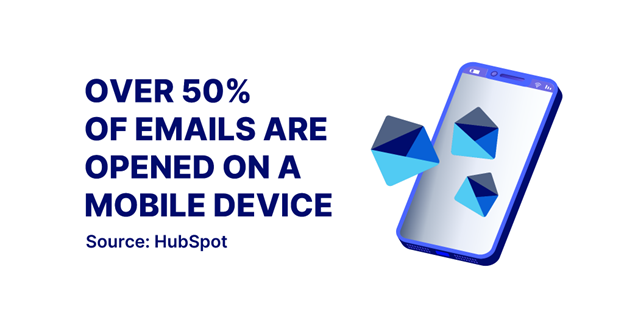
Advantages of Email Marketing
Email marketing offers numerous advantages, making it a tempting choice for organisations of any size and industry to use in their marketing strategies.
Cost-Efficiency
To begin with, it is a more economical approach in contrast to conventional advertising platforms. By customising email campaigns to specific categories, marketing expenses can be optimised, focusing on individuals with the highest probability of conversion.
Measurable Results
Email marketing also offers concrete and quantifiable outcomes. Businesses can utilise advanced analytics solutions to monitor open rates, click-through rates, and conversion indicators. By using a data-driven approach, it is possible to continuously improve emails, ensuring that each subsequent campaign benefits from the achievements of the previous one.
Brand Loyalty
In addition to measurable data, email marketing cultivates brand loyalty by providing customised and pertinent content while establishing direct communication with the target demographic.
Versatility
Email marketing can be easily adapted to various purposes. The versatility of email marketing enables efficient client involvement at different points in the customer journey, regardless of whether your business is a startup or a multinational organisation. It’s a tool that can be customised to meet many business objectives, ranging from nurturing leads to communicating with customers after a purchase.
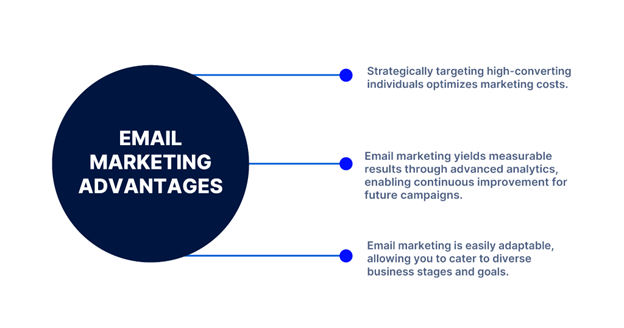
Email Marketing Limitations
Although email marketing offers significant advantages, it is crucial to address potential limitations to guarantee the durability and effectiveness of your efforts.
Spam
Spam continues to be a recurring obstacle in the realm of email marketing. Emails marked as spam harm your reputation as the sender and impede the delivery of messages to the intended recipients.
Size
Email size can affect the ability to deliver emails and the overall user experience. Files of significant size can activate spam filters or cause delayed loading times, which can ultimately lead to disinterest or disengagement. To overcome size-related issues, optimising emails for fast loading, compressing graphics, and employing efficient coding standards is necessary.
Competition
In a densely populated online environment, it’s an ongoing struggle to distinguish yourself from thousands of competitors in your customers’ inboxes. Employing tactics such as crafting captivating subject lines, designing visually appealing layouts, and delivering material that profoundly connects with the intended audience are effective techniques to surpass competitors.
Engagement
Subpar levels of audience involvement may indicate a lack of alignment between your content and your audience’s preferences. Customising material, integrating interactive components, and employing dynamic content according to user preferences are successful strategies for maintaining audience engagement.
Design
Aesthetics is crucial in grabbing and maintaining attention. A well-designed email improves the user experience and strengthens brand identity. Responsive design, which guarantees that emails are displayed flawlessly on different devices, is crucial. However, this is not always easy for business owners and can require the additional expense of hiring a designer.
Budgeting
Although email marketing is typically economical, there may be undisclosed costs that can add up over time. For example, you may need to hire a professional designer or a copywriting agency to achieve the highest possible return on investment.
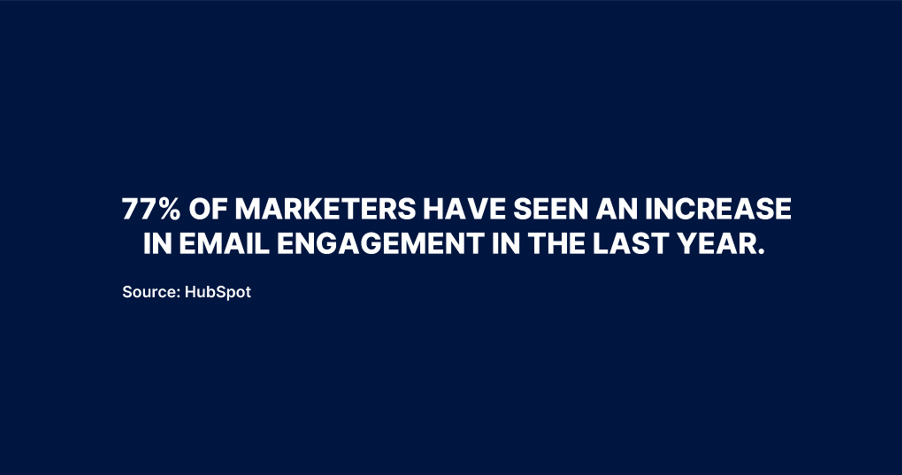
Types of Marketing Emails (With Examples)
Email marketing is a highly adaptable form of communication for businesses. Various categories of marketing emails fulfil specific objectives in effectively engaging and cultivating connections with the target audience.
Welcome Emails
The welcome email is the initial interaction between a brand and a newly subscribed individual. It establishes the atmosphere for the connection, rendering it a crucial point of contact in the customer’s journey.
Example: An e-commerce brand may send a welcome email to a customer who recently signed up for their email list, offering them a discount for their initial purchase. This may motivate the new subscriber to discover the brand’s products and eventually purchase.
Newsletter Emails
Newsletters are the fundamental element of email-based content marketing. Email newsletters serve as a medium for delivering essential information, updates, and unique content directly to the recipient’s email inbox. The success of newsletter campaigns relies on maintaining consistency and relevancy, ensuring a regular schedule that informs and engages readers.
Example: A creative agency may share weekly newsletters with their email list that include helpful tips or relevant news in their niche. This can help position the brand as a reputable source clients may contact when they need help with a project.
Confirmation Emails
Confirmation emails validate and finalise purchases, subscriptions, or sign-ups. In addition to simply verifying an action, these emails offer a chance for further interaction with the customer. They offer reassurance to the recipient, relay important information, and frequently prompt the user to take additional actions or explore related options.
Example: An e-commerce platform sends a verification email to a customer following a successful purchase. It confirms the transaction and provides additional information, such as an order overview, shipping details, and an offer to explore related products. The brand enhances communication effectiveness by smoothly incorporating more chances for participation.
Lead Nurturing Emails
Lead nurturing refers to developing and cultivating relationships with potential customers to guide them through the sales funnel and ultimately convert them into paying customers.
Lead nurturing is a systematic way to direct potential customers through the process of making a purchase. It entails providing specific content, customised suggestions, and timely interactions to guide potential customers toward purchasing. Efficient lead nurturing entails comprehending the prospect’s progression, delivering pertinent facts, and cultivating trust gradually.
Example: A software company may collect customer emails on its website and employ a lead nurturing strategy with a sequence of emails. The first email could focus on a specific pain point in their industry, followed by additional emails that emphasise how their software program can offer a practical solution. The end goal for the software company would be to achieve a conversion, such as a product demonstration or a free trial.
Marketing Emails
Promotional emails are strategically designed to stimulate sales and encourage conversions. These emails frequently include compelling text, emphasise the product’s advantages, and generate a feeling of urgency to motivate recipients to act promptly.
Example: A retail business could dispatch a promotional email to announce a time-limited sale featuring exclusive discounts. The email may feature popular merchandise, highlight the short time frame of the offer, and provide a distinct call to action to encourage immediate shopping.
Email Invitations
Invite emails function as digital passes, granting access to events, webinars, product launches, or unique experiences. The purpose of these emails is to create anticipation and excitement, hence increasing attendance and participation.
Example: An IT company organises a webinar to introduce its management services. They send an invitation email with details about the webinar, from significant topics to a persuasive call to action to sign up. The invite email should compel recipients to reserve the date on their calendars and actively engage in the event.
Seasonal Marketing Emails
Seasonal marketing emails leverage the atmosphere of particular periods throughout the year, connecting brand communication with the prevailing mood and themes of the season. Seasonal emails enhance the relevancy and impact of a brand’s communication, whether it is for holiday sales, back-to-school efforts, or special events.
Example: A clothing retailer may send out a seasonal marketing email to prepare for an upcoming summer sale. The contents of the email may include vivid imagery of the products, information on special promotions, and convincing copy to generate anticipation for the approaching season.
Email Surveys
Surveys are highly effective tools for collecting insights and comments directly from the audience. Survey emails are crafted explicitly to prompt readers to express their ideas, preferences, and experiences, supplying organisations with essential data to enhance their products, services, or marketing tactics.
Example: A consumer products business is interested in obtaining feedback for a new line of products. The survey email sent to customers would encompass a customised greeting with a short survey, reassuring respondents that their feedback is appreciated. The result can ultimately improve consumer happiness and help the company develop better products in the future.
How to Get Started Building Your Email List
Developing and fostering an email marketing list is comparable to tending to a garden; it needs patience, strategic planning, and continuous attention. A robust email list is more than just a compilation of email addresses. It is a group of actively involved individuals who willingly accept contact from your business. Here’s how you can organically build a powerful email marketing database:
1. Create High-Quality Content
The cornerstone of a successful email marketing list is established on the provision of valuable content. Generate compelling content that connects with your intended audience by acknowledging their challenges, presenting remedies, and sharing valuable perspectives. The material you create, whether instructive blog posts, interesting videos, or unique tools, should function as a powerful force that draws in potential subscribers.
2. Use Opt-In Forms Strategically
Opt-in forms serve as the entry points to your email list. Strategically position these forms on your website, landing pages, and social media platforms to capture leads at different interaction points. For best results, make sure the opt-in process is smooth, engaging, and in harmony with the user’s experience.
3. Give Incentives For New Subscribers
Providing unique advantages, reduced prices, or enhanced materials for your new email subscribers can greatly enhance the size of your list. Incentives establish a mutually beneficial situation in which subscribers promptly obtain value while businesses acquire consent to cultivate a long-term connection.
4. Divide Your List
Segmentation is the key factor that converts a generic email list into a very effective tool for individualised communication. To enhance your approach, categorise your list of subscribers according to their demographics, actions, or preferences rather than treating them all uniformly. By customising your material to certain categories, you increase its relevance and encourage greater participation.
5. Work With a PPC Agency
Partnering with a PPC agency can significantly enhance your email list. Pay-per-click (PPC) advertising enables firms to target particular populations precisely, directing traffic toward landing sites optimised with opt-in forms. PPC agencies leverage their experience in keyword targeting, ad design, and campaign optimisation to enhance the efficacy of paid advertising.
Contrary to SEO (search engine optimisation), SEA (search engine advertising) focuses on targeted engagement for brand visibility. The right PPC partner can help you achieve seo sea synergy in your marketing efforts for the highest return on investment.
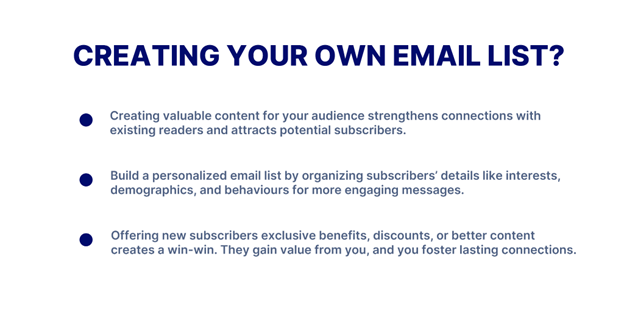
Using Growth Marketing Tactics to Expand Your Email Subscriber Base
Growth marketing has been a prominent method in the always-changing digital marketing realm. It is a dynamic and data-oriented approach that focuses on creating and consistently extending an email marketing list. Growth marketing surpasses conventional techniques by prioritising experimentation, data analysis, and optimising conversion paths to cultivate long-lasting expansion.
A/B Testing and Experimentation
A crucial element of growth marketing for email list expansion involves A/B testing and experimentation. Take a technology startup, for instance, employing different versions of content, design, and targeting criteria to determine the most efficient methods for acquiring new members. The firm acquires vital knowledge about customer preferences through methodical experimentation with various components of its lead generation channels, enabling it to improve its approach consistently.
This iterative technique entails generating many iterations of email campaigns and distributing them to distinct audience subsets. Marketers may determine which features have the strongest impact on their intended audience by meticulously examining performance indicators such as open rates, click-through rates, and conversion rates.
Data Analysis For Well-Informed Email Marketing Decisions
Data analysis is crucial in implementing growth marketing strategies to build email lists. Within this particular framework, the same technology startup can use sophisticated analytics tools to acquire a more profound understanding of user behaviour. Through careful data analysis regarding subscriber interactions, preferences, and engagement patterns, businesses may make well-informed decisions to enhance their email marketing strategy.
Email Marketing Frequently Asked Questions (FAQs)
What is the process for composing a marketing email?
Creating effective emails for marketing is a skill that involves meticulously crafting a message that connects with your target audience and inspires them to act. Essential elements of a marketing email include:
- Subject Line: Craft an engaging and concise subject line that ignites curiosity and motivates recipients to open the email.
- Concise Communication: Effectively express the unique benefits of your product or service, highlighting how it specifically meets the requirements or aspirations of your target audience.
- Persuasive Language: Utilise compelling language to communicate the advantages of your product or service, emphasising distinctive selling factors and motivating recipients to perform the intended action.
- Call-to-Action: Incorporate a robust and persuasive call-to-action that directs recipients on the necessary actions to be taken next, be it making a purchase, subscribing, or clicking a link.
To optimise the efficacy of your marketing email, contemplate integrating customisation and segmentation. Customise your message according to the recipient’s preferences, demographics, or previous engagements with your brand. Personalised material promotes a feeling of connection and significance, hence enhancing the probability of active participation.
What is a marketing email with an example?
A marketing email is a promotional message sent to a targeted audience with the aim of promoting a product or service. An example of a marketing email could be a message sent by a company to its customers, offering a special discount on a new product or driving awareness to a limited-time sale.
What are the four types of marketing emails?
The four categories of email marketing are promotional emails, transactional emails, relational emails, and lifecycle emails:
- Transactional emails serve to validate a particular transaction, such as providing proof of purchase, notifying shipment status, or confirming an order.
- Relational emails are specifically crafted to establish and cultivate connections with subscribers. These emails encompass welcome messages, newsletters, and content that aims to keep the audience well-informed and actively engaged.
- Promotional emails are designed to stimulate sales and conversions by presenting recipients with offers, discounts, or special deals, aiming to prompt immediate action.
- Informational emails deliver relevant information, updates, or material directly to subscribers, serving as a method to keep them informed and engaged with the business.
How can I create my own marketing email?
Crafting your marketing email requires a deliberate and planned strategy. Below is a sequential manual to assist you in creating a compelling marketing email:
- Determine Your Objective: Clearly articulate the intention of your email, whether it is to advertise a product, notify about an event, or distribute important information.
- Understand Your Audience: Customise your message to align with the preferences and requirements of your intended audience. Take into account factors such as demographics, behaviours, and previous interactions.
- Create an Engaging Subject Line: Attract interest by using a brief and captivating subject line that ignites curiosity or communicates worth.
- Include Captivating Content: Employ aesthetically pleasing designs, persuasive text, and multimedia components to effectively communicate your message. Ensure that the design is in accordance with your brand identity.
- Incorporate a Compelling Call-to-Action: Motivate recipients to engage in the intended action, such as completing a purchase, subscribing, or clicking on a hyperlink. Use unambiguous and persuasive language.
- Mobile Optimisation: Ensure that your email is displayed flawlessly on different devices, as many people access emails on mobile devices.









